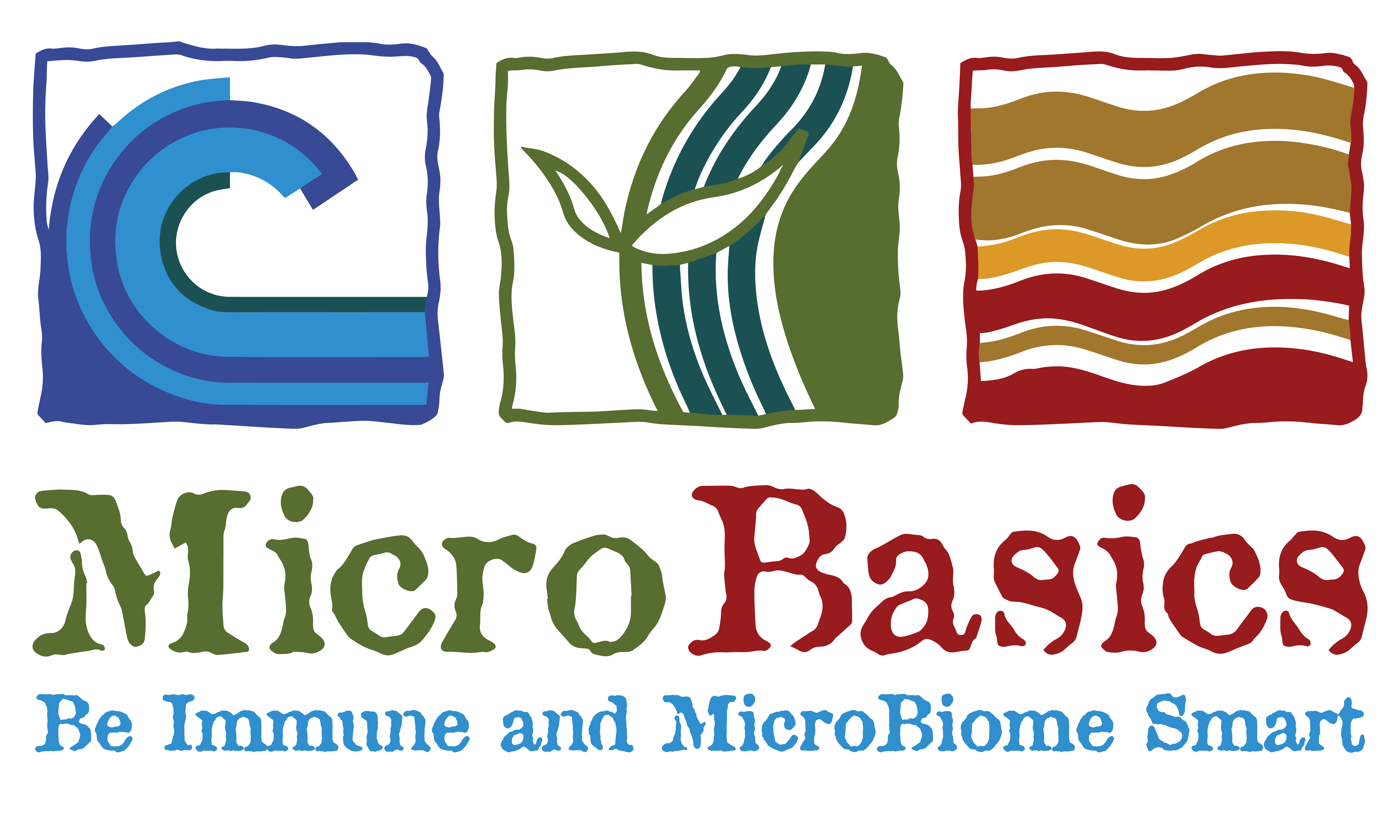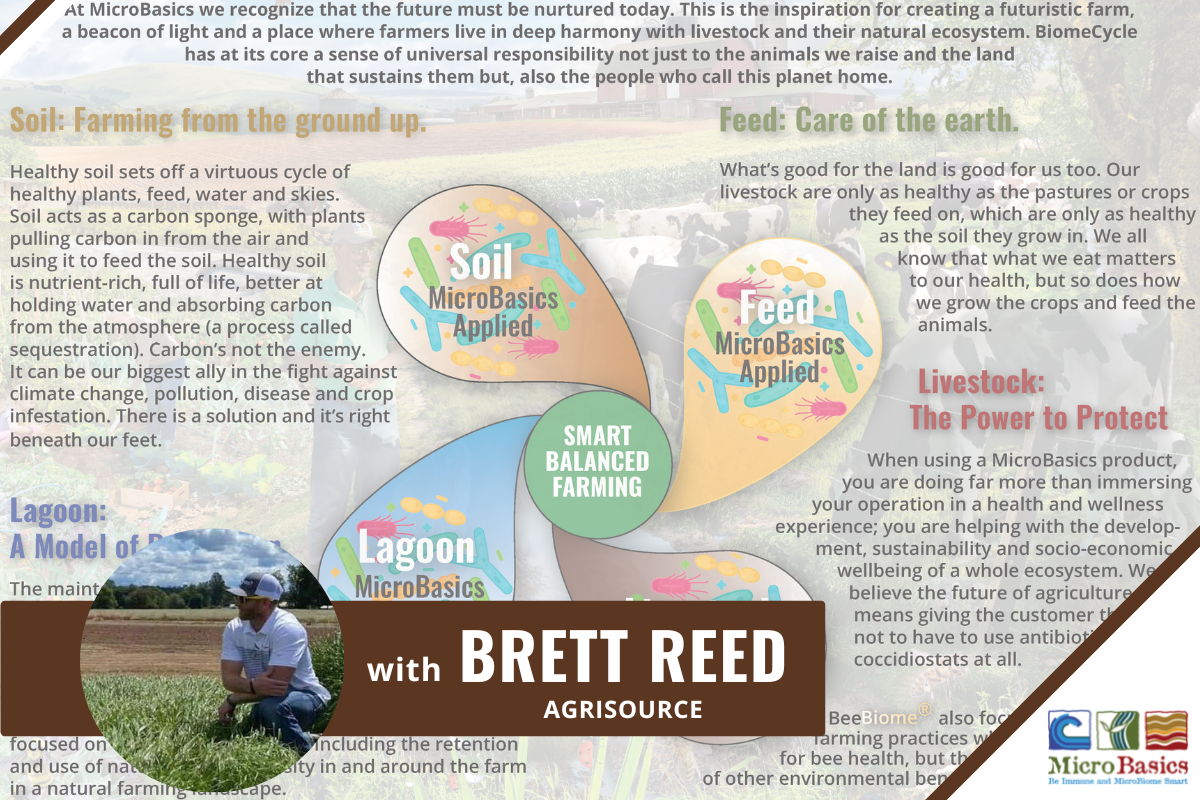The soil food web is made up of fungi and bacteria, which are preyed upon by protozoa, nematodes, micro-arthropods, and other larger organisms we also group in our microbiome. There are numerous amounts of species for each of these creatures. The population and ratio of microbes within the soil will vary greatly from ratio to ratio in the soil from one field even to another. This all relates back to the health status and plant environment, because each of these organisms is, in large part, controlled by the plants being grown, and practices being used.
This week Brett Reed from AgriSource, Inc explains how soil health is impacted by how we manage our cattle and how that is all integrated into what is called the Biome Cycle.
What is The Biome Cycle?
A biome by definition is a biogeographical unit consisting of a biological community that has formed in response to the physical environment in which they are found and a shared regional climate. While a biome can cover large areas such as the high desert in which southern Idaho resides, a microbiome is a mix of organisms that coexist in a defined space on a much smaller scale.
Nutrient and energy flow also play a critical role in ecosystems that make up biomes. Biomes describe life on a much larger scale than either habitats or ecosystems.
What brings this all together is that biomes can be differentiated by the organisms residing there and by the climate, as well as the fact that the organisms within a biome share adaptations for that particular environment. The actual cycles that are present in our biomes consist of water, carbon, nitrogen just to name a few. All these make up our biome cycle.
How Does Agriculture Impact The Biome Cycle?
One of the key features of sustainable agriculture is the focus on the health of soils. Healthy soils create a healthy biome and its proponent cycles. Some of the practices such as crop rotation, cover cropping, no-tillage, as well as strip tilling, and the application of compost, improve soil fertility naturally and can even speed up the process of new topsoil formation. I would also add that using livestock in these practices helps to propel the health and speed at which soil health can be achieved. These practices help to secure stable yields, increase biodiversity, and help to prevent the exhaustion of these soils, and biodiversity of favorable soil flora and fauna.
Soils rich in organic matter and flourishing with life also contain greater concentrations of the natural enemies of pests, thus supporting the growth of more resilient crops.
According to Dr. Elaine Ingham, one teaspoon of healthy soil can contain up to 1 billion helpful bacteria, while concentration in intensively farmed soils might drop to one hundred.
As with any other plants, growing crops – especially perennial polyculture systems used in permaculture farming and agroforestry – add oxygen to the atmosphere, as plants photosynthesize and remove carbon dioxide from the atmosphere. The richer the plant cover is, the more it uses carbon dioxide to support its life functions.
What is the most important thing that farmers can do to benefit the Biome Cycle?
Think outside the box and go ahead and try to change some things up. Change promotes growth and growth can promote new solutions on your farm or ranch. I say that because in our modern farming practices in the west we are still predominantly tilling and by tilling we destroy the carbon and microbiomes that we have in our soil. With minimum tillage and or no till we can conserve and build our carbon and micro reserves and populations.
Carbon is also sequestered by soils, which have a natural carbon carrying capacity that increases when soils are managed with minimum disturbance.
In rotational grazing systems, animals help to store carbon in the soil. Through grazing for a limited time period in one area, biodiversity of native plants increases because grasses have time to regrow equally without one species taking over and becoming invasive. Richer and better-quality pasture means more organic material entering soils, which makes soils healthy and increases their capacity to sequester carbon from the atmosphere, this allows more of the soil microbiome to flourish and do what biology has intended it to do.
How are microbes involved in the biome cycle and what can we do to cultivate their growth?
Plant microbiomes include microbes, these microbes can be shaped by factors related to the plant itself, much like genotype, organ, species and health status, as well as other factors related to the plant’s environment, such as management, land use and climate. The health status of a plant has been reported in some studies to be reflected by or linked to its microbiome.
In all honesty the best way to sustain and cultivate our microbiology or the microbes is to cultivate our carbon in the soil. The cultivation of carbon is also a sequestration of it. One way is minimum tillage or no tillage, leaving roots in the soil and biomass in and above our soils as much as we can. All of those organisms, most of which are beneficial to the soil help to make up our biomes in the soil.
All of this is important because soil microorganisms hold nutrients in the soil environment, so that the nutrients can be available when your plants need them. Synthetic nutrients are engineered to be absorbed by roots in a soluble form. As the nutrients pass by, what isn’t absorbed is leached away by moving water. Whereas the organic nutrients sustained in the soil food web remain as part of an ever-evolving cycle. No waste. No leaching.
To have a healthy biome or crop we need to pay attention to the microbiomes within our own fields.
How can farmers find resources to help them improve the microbiome on their own farm or ranch?
There are programs and people in our area that are willing to help make some of these first steps in promoting growth in your operation. That is usually the hardest thing to do, especially after we have been doing something the same way for all or most of our lives. We must look at what new challenges we face each season we grow products for the world. If we keep doing the same things over and over and expect a different result, then we won’t get anywhere. Always ask questions about your own farm and its practices, it’s never a bad thing to question what and how you are doing things.
Brett is a great resource for forage and soil health. If you would like to contact him for assistance in improving your crops and soil please send him an email at breed@agrisourceinc.com.
Written by: Brett Reed and Mariah Gull

